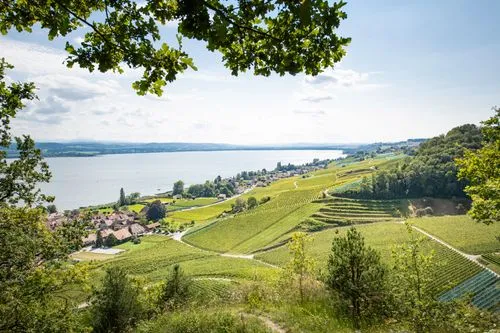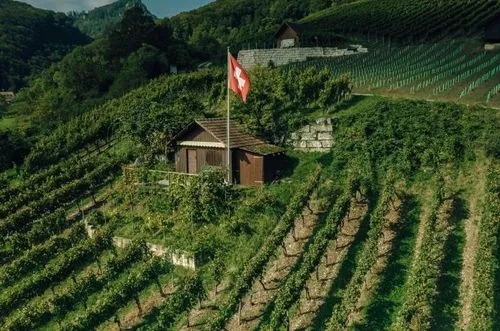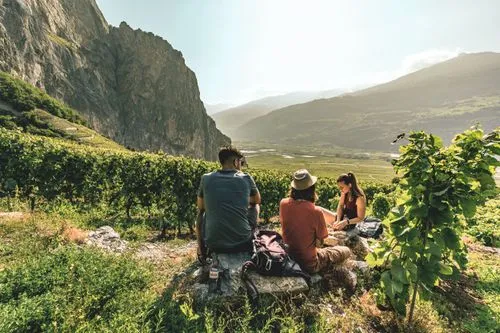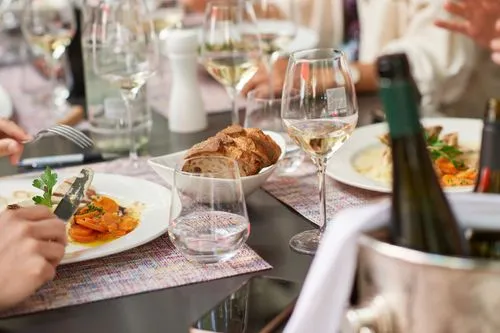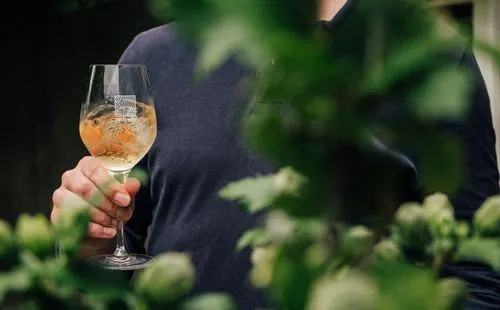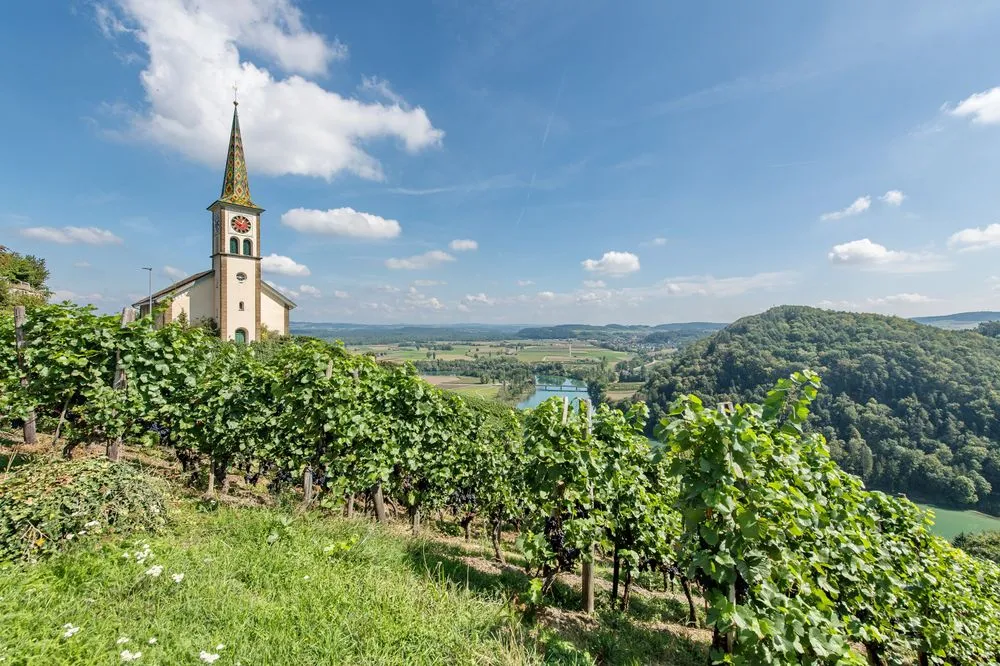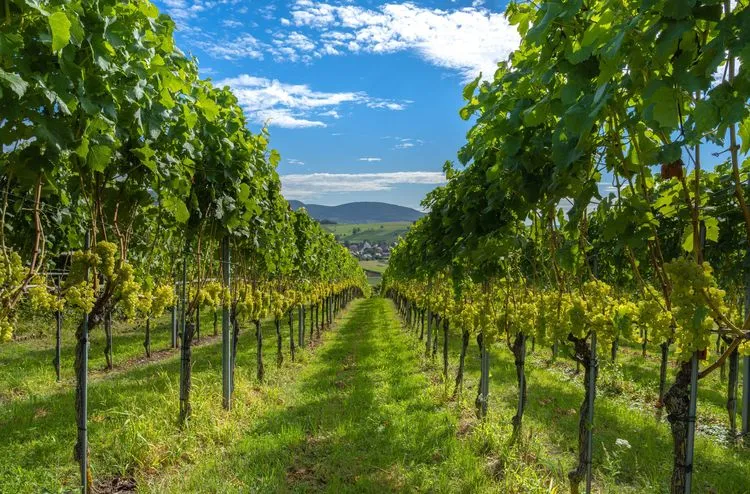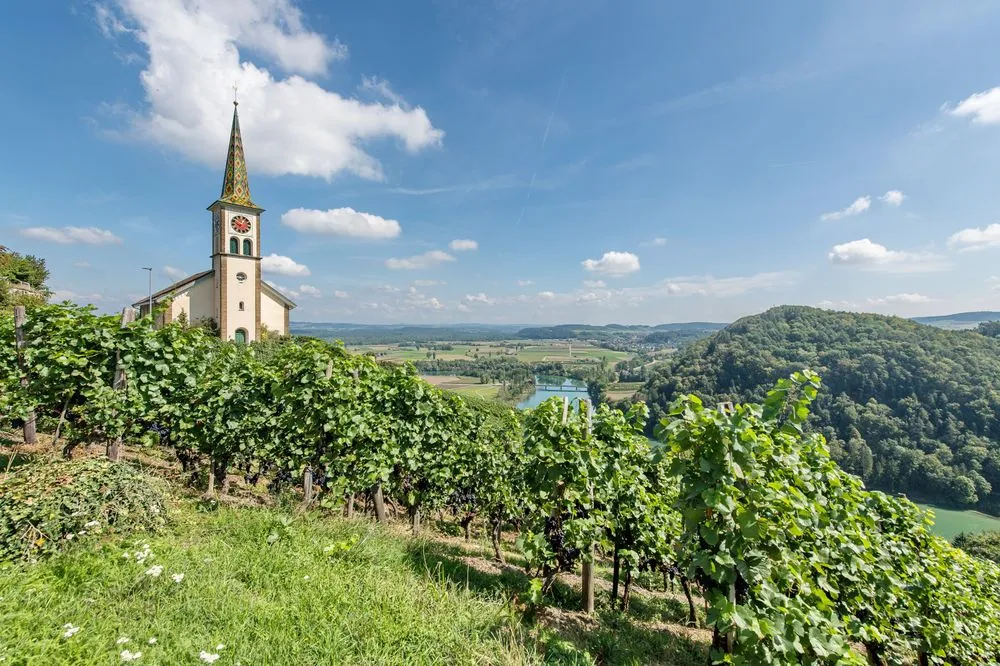A particular speciality of the region is the “Goldsiegel Spätlese”. These grapes are harvested at least ten days after the main harvest begins. After the fully ripe Pinot Noir grapes are pressed, the wine undergoes an extended maceration process, imparting an intense fruit flavour. It is then aged in either oak barrels or large wooden casks.
The principal hub of Schaffhausen’s wine production is Hallau, the largest wine-growing community in German-speaking Switzerland. Schaffhausen boasts a winemaking tradition that spans centuries. Historical records show that by 1100, the All Saints Monastery in Schaffhausen owned vineyards in Hallau. Wine was not only used for religious ceremonies, but was also a staple in the monks’ daily lives. Today, Schaffhausen’s wine culture is a vibrant part of Switzerland’s living traditions. The Canton of Schaffhausen is divided into four wine-growing regions.
